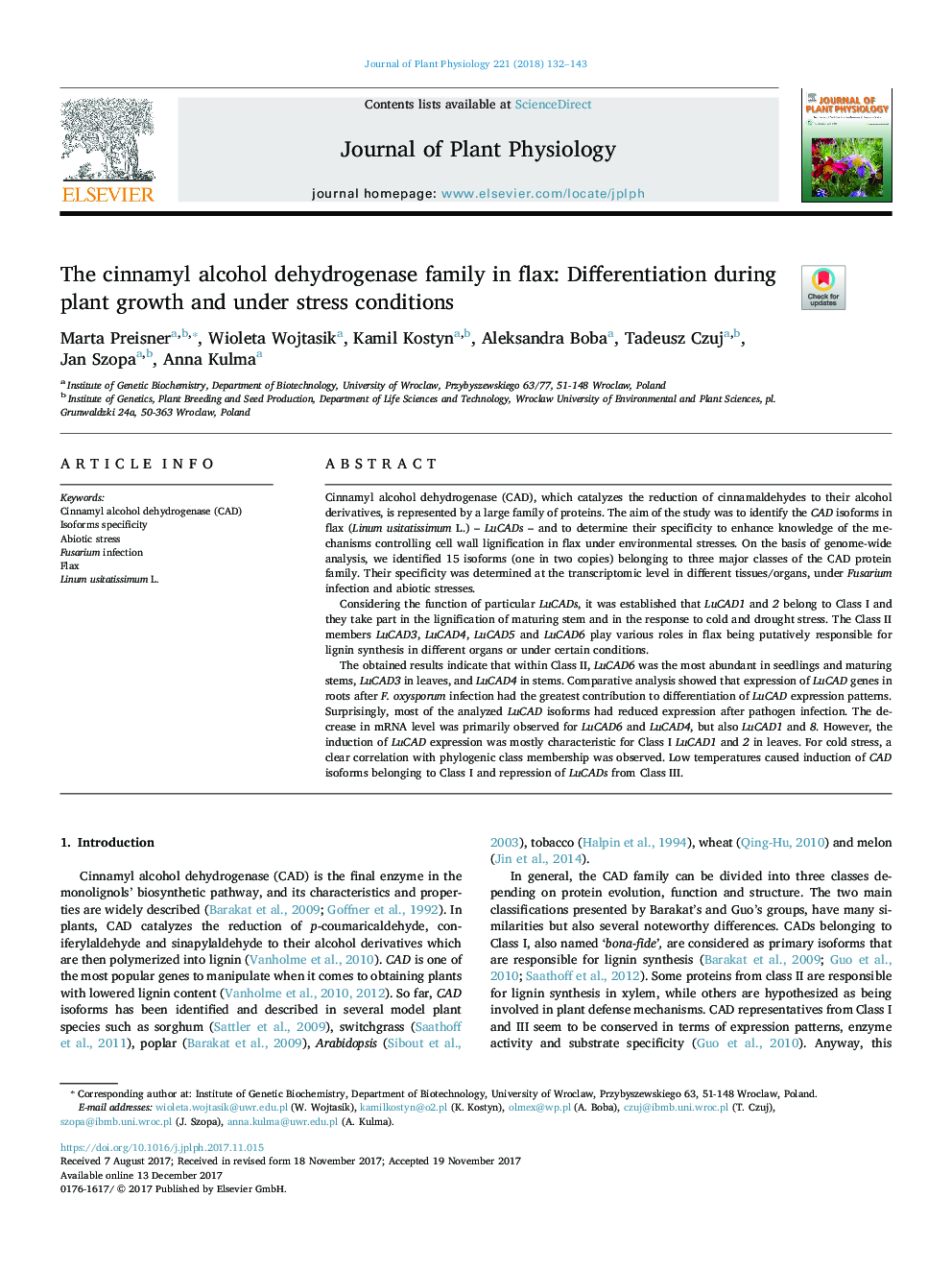| Article ID | Journal | Published Year | Pages | File Type |
|---|---|---|---|---|
| 8386992 | Journal of Plant Physiology | 2018 | 12 Pages |
Abstract
The obtained results indicate that within Class II, LuCAD6 was the most abundant in seedlings and maturing stems, LuCAD3 in leaves, and LuCAD4 in stems. Comparative analysis showed that expression of LuCAD genes in roots after F. oxysporum infection had the greatest contribution to differentiation of LuCAD expression patterns. Surprisingly, most of the analyzed LuCAD isoforms had reduced expression after pathogen infection. The decrease in mRNA level was primarily observed for LuCAD6 and LuCAD4, but also LuCAD1 and 8. However, the induction of LuCAD expression was mostly characteristic for Class I LuCAD1 and 2 in leaves. For cold stress, a clear correlation with phylogenic class membership was observed. Low temperatures caused induction of CAD isoforms belonging to Class I and repression of LuCADs from Class III.
Related Topics
Life Sciences
Agricultural and Biological Sciences
Agronomy and Crop Science
Authors
Marta Preisner, Wioleta Wojtasik, Kamil Kostyn, Aleksandra Boba, Tadeusz Czuj, Jan Szopa, Anna Kulma,
